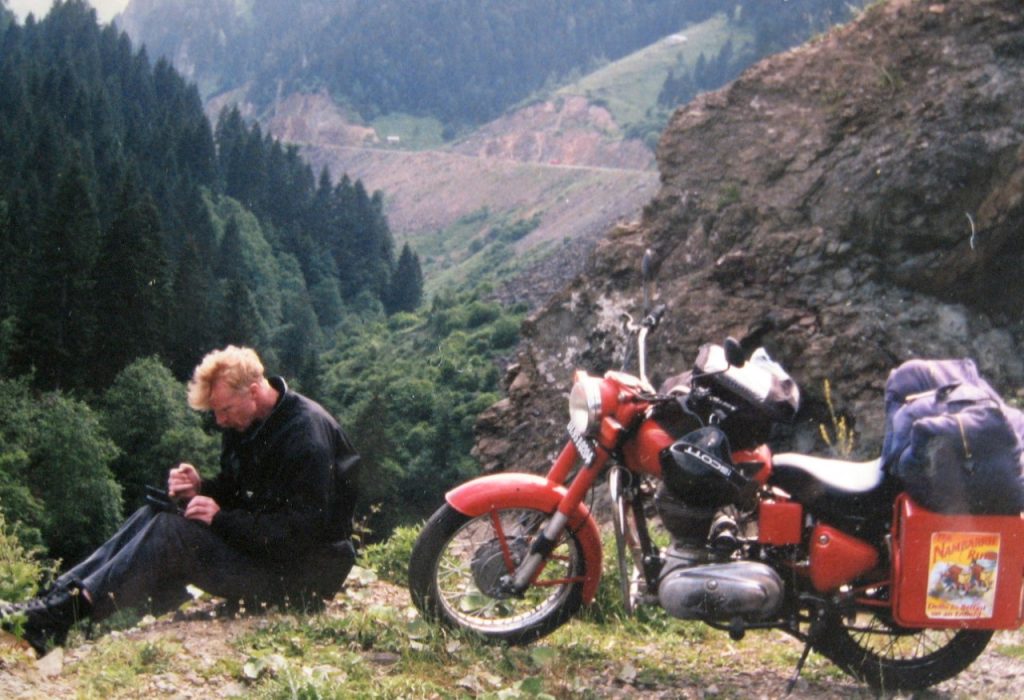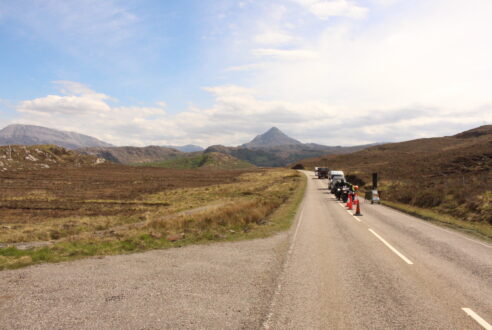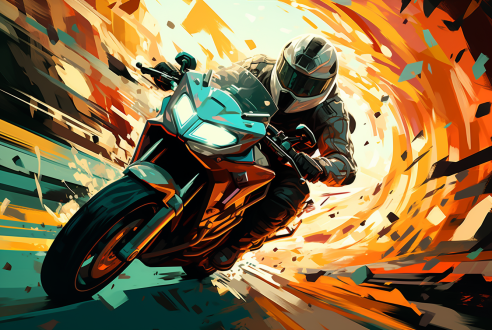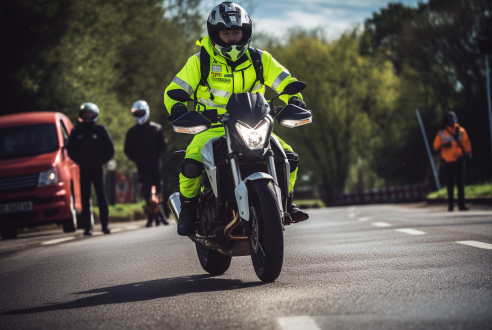
My dad and uncle used to race Nortons and Rudges in the North West 200 and Cookstown 100 in the Fifties, until dad had a really bad accident when I was eight.
Rather ironically, he’d stopped racing by then, and it was his bank manager driving out of a side road without looking who knocked him off his Norton.
Either that, or they dealt with overdrafts more severely in those days.
Dad had to sell all his bikes and shut down his motorbike garage business, so it was years before I finally got around to doing my test in the Nineties.
Back then, it involved riding around the block watched by an examiner, then trying not to kill him when he stepped out into the road and raised his hand to tell you to do an emergency stop.
He still managed to fail me, mind you, for easing out past a dashed give way line at a junction so I could see past a row of parked cars.
“But that’s what my instructor told me to do!” I moaned.
“Well, he shouldn’t have. Better luck next time,” he muttered.
Two weeks later, I passed anyway, and a couple of years later, with 30 miles on a bike in my life, as the result of too many glasses of wine one night with my mate Paddy Minne, we found ourselves sitting on two Enfields in Delhi about to ride the 7,000 miles home.
I must have been mad, and the good news is that these days the Government makes sure you adopt a sane approach to starting your motorcycling life; and that you don’t do what you could do in previous years – pass your test by riding around the block on a 125cc machine, then buy a 1,000cc superbike and kill yourself.
The bad news is that the process of getting a motorbike licence in Northern Ireland is now disturbingly complex, especially if you’re a teenager.
So here it is, as simply as I can make it.
Applying for your provisional licence
For all levels, before you start, you need to get a provisional licence by filling in a simple DL1 form which you can get from most post offices.
Send that off to the DVLA with £62.50, and when you get the provisional licence, you can ride with an L-plate, although no pillion passengers.
Then it’s off to the nearest riding school to do CBT test, Compulsory Basic Training, which takes a day or two, and pass a theory and practical test, and that’s you unleashed on the open road with a licence.
For car drivers, if you passed your car test before 1 February, 2001 you can ride a 50cc moped without doing CBT, but any other motorcycle needs CBT. If you passed your car test after that date, you’ll need CBT for a moped too.
Motorbike licences are age restricted
If you’re 16, you can ride a 50cc moped with a maximum speed of 28mph.
When you’re 17 or 18, you can ride anything up to 125cc or with a power of 11 kilowatts on what’s called an A1 licence.
If like me you wouldn’t recognise a kilowatt if one came up and introduced itself, that’s 14.75bhp.
That doesn’t mean you can’t have some fun with those little beauties which don’t mind you revving their hearts out, from the Lexmoto LXR125 at £2,199 up to the Yamaha YZF-R125 at £4,799, although my personal favourite would be the £3,799 KTM 125 Duke, since KTMs of any size are a hoot to ride, and not many people know that KTM stands for Keep Throttle at Maximum.
Mind you, the reason not many know that is because I made it up.
Here’s my mate Phil West on what you can get your hands on in that category: https://www.bennetts.co.uk/best-a1-motorcycles
And of course you don’t have to buy new, although Personal Contract Purchase, or PCP, deals where you pay a deposit then a monthly lease, and after three years hand the bike back or trade it in and start a new PCP deal with another one, are very attractive, as are low interest finance deals where you own the bike outright.
That Lexmoto LXR125, for example, can be yours for as little as £48 a month.
If you’re on a tight budget and want to own the bike, go secondhand, and we’ll show how to do that on this site as well.
Once you reach the giddy heights of 19, things get a bit more exciting: you can get an A2 licence, which lets you ride motorbikes up to 47bhp.
If you’ve already held an A1 licence for two years, you move up to A2 automatically, but if not, you just have to get a provisional licence as above, then do your CBT on an A2 bike and pass the theory and practical A2 tests.
When you’re learning on the road, you have to be accompanied by an approved instructor.
Here’s the guide to A2 and up: https://www.nidirect.gov.uk/articles/driving-licence-you-need-ride-motorcycle
Now, 47bhp is more than enough for some fun on the road, allowing you to overtake any car short of a Porsche or Ferrari and cruise happily at motorway speeds.
Prices of new bikes range from £4,875 for the BMW G310R up to more powerful bikes which can be restricted temporarily to 47bhp such as the £8,100 Triumph Street Triple S.
Here’s my mate Phil again with the best on offer: https://www.bennetts.co.uk/best-a2-licence-motorcycles
For me, the winner by far in this category is the Royal Enfield Interceptor 650, with gorgeous retro looks, sporty performance, great sound, brilliant handling and at £5,699 an astonishing price for what you get.
You can also ride more powerful bikes on an A2 licence if they’ve been restricted to 47bhp with a simple kit, which can be removed to unleash full power once you hit a certain age and can get what’s called a Category A licence.
If you’re 21 and have held an A2 licence for two years, you move up to Category A automatically, or if you’re 24 and starting from scratch, you need your provisional licence, then CBT and practical and theory Category A tests.
As with A2, when learning on public roads, you need to be accompanied by an instructor.
So that’s it: all you need to know to get going on two wheels. The good news is that once you get your licence, there really is nothing like heading out on the road on your bike on a fine day, either on your own or with your biking buddies, for a glorious, liberating synergy of freedom and fun.
But maybe don’t start in Delhi, like I did.



